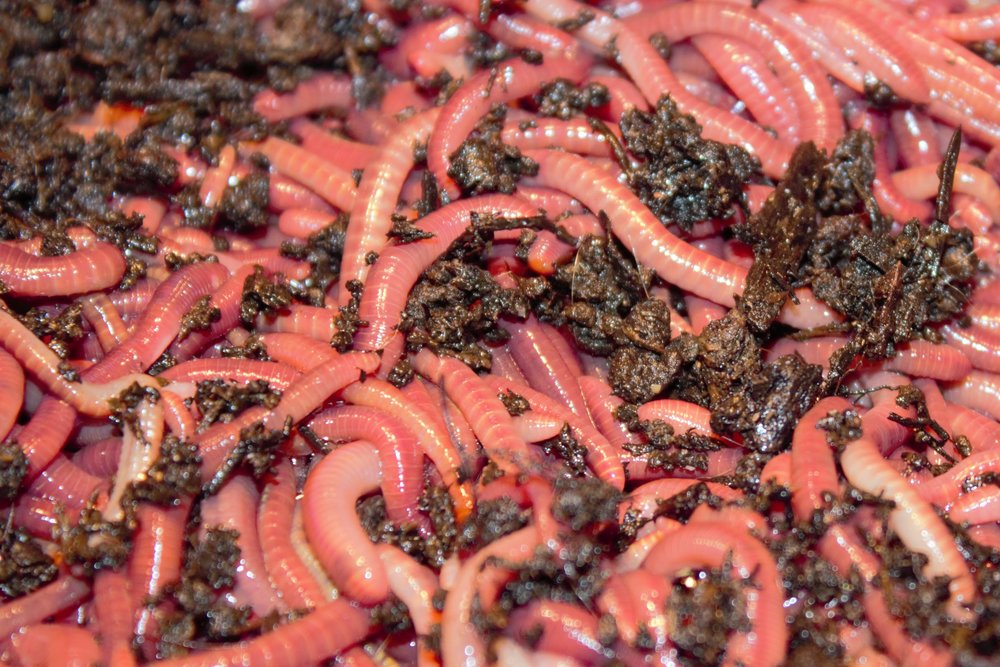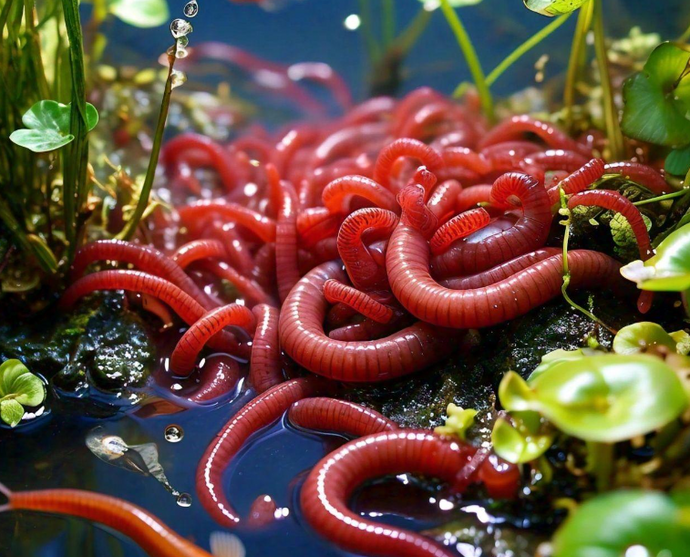Compost-ready red wigglers: How to find them
Compost-ready red wigglers: How to find them
Blog Article
The Role of Red Wigglers in Sustainable Horticulture
The combination of red wigglers right into sustainable horticulture methods provides a compelling technique to improving dirt wellness and minimizing organic waste. These microorganisms not just convert kitchen scraps into nutrient-dense garden compost via vermicomposting but additionally aerate the dirt, advertising ideal conditions for plant development. As they damage down facility natural materials, they actively promote a thriving microbial environment crucial for sustainable farming. However, the ramifications of making use of red wigglers extend beyond mere composting; their duty fit a more lasting future warrants a deeper exploration of their benefits and functional applications.
Comprehending Red Wigglers
Red wigglers, scientifically referred to as Eisenia fetida, are a types of earthworm renowned for their function in sustainable horticulture and composting methods - red wigglers. These worms flourish in decaying raw material, making them specifically reliable in converting kitchen area scraps and backyard waste into nutrient-rich compost. Unlike typical earthworms, red wigglers have a greater tolerance for differing wetness degrees and can prosper in atmospheres with plentiful natural material
(Granite Falls Worm Farms)Characteristically, red wigglers are smaller sized than their earthworm counterparts, usually measuring in between 3 to 4 inches in size. They have a reddish-brown coloration and have a fractional body structure that helps in their burrowing and feeding activities. These microorganisms are hermaphroditic, meaning each individual has both male and female reproductive body organs, which enables reliable populace development under ideal problems.
The environment preferences of red wigglers consist of moist, dark settings rich in organic content, such as compost bins or worm farms. Their ecological role extends beyond composting; they are essential in freshening the soil and helping with nutrition biking, which inevitably adds to much healthier garden communities. red wigglers. Recognizing the biology and actions of red wigglers is vital for those looking for to carry out efficient vermicomposting in lasting gardening
Advantages of Vermicomposting
Vermicomposting deals many advantages that boost lasting gardening techniques and contribute to ecological health. Among the main advantages is the transformation of natural waste into nutrient-rich garden compost, which enhances dirt framework and fertility. The spreadings produced by red wigglers are loaded with useful microbes and important nutrients, making them a superb all-natural fertilizer.
Furthermore, vermicomposting dramatically decreases land fill waste. By diverting kitchen scraps and yard waste from landfills, this practice not just reduces methane emissions-- a powerful greenhouse gas-- but also promotes a round economic situation, where waste is repurposed as a resource.
An additional advantage is the improvement of dirt aeration and water drainage (red wigglers). The burrowing task of red wigglers develops networks in the dirt, allowing air and water to penetrate more quickly, thus fostering a much healthier root system for plants
In addition, vermicomposting can be done on a little range, making it accessible for metropolitan gardeners and those with limited room. This technique encourages ecological stewardship and recognition, as individuals become extra engaged with their waste management practices. Inevitably, vermicomposting stands for a lasting, reliable, and green approach to horticulture that profits both plants and the planet.
How to Begin Vermicomposting
Starting your very own vermicomposting system can be a gratifying venture that enhances your sustainable gardening techniques. To start, choose an appropriate container, such as a plastic bin or wood box, with great drainage and air flow. The i loved this dimension will certainly rely on the quantity of cooking area scraps you generate; a bin of 10-14 gallons generally is sufficient for a household.
Next, prepare the bed linen product. Shredded paper, cardboard, and coconut coir are excellent alternatives, providing a comfortable environment for the red wigglers. Go for a bedding depth of concerning 4-6 inches, which ought to be wet however not soggy.
When the bed linens is established, present your worms. Red wigglers (Eisenia fetida) are the most suitable for composting. Beginning with roughly one extra pound of worms for each 2-3 pounds of kitchen scraps weekly.
Begin adding cooking area waste, staying clear of meat, dairy products, and oily foods, as these can bring in parasites and develop smells. On a regular basis check the bin's wetness degrees and temperature, guaranteeing it stays within the ideal array for worm task. With these first steps, you'll be well on your means to creating nutrient-rich garden compost for your garden.
Keeping a Healthy And Balanced Worm Bin
A prospering worm bin requires constant treatment and attention to keep an optimum environment for the red wigglers. Trick aspects to check include moisture levels, temperature, and food supply. Keeping a wetness degree akin to a wrung-out sponge is critical; way too much water can lead to anaerobic problems, while insufficient can dry out the worms.
Temperature level is also important, as red wigglers prosper in a variety of 55 to 77 degrees Fahrenheit. Severe temperatures can stress the worms, potentially causing death. As a result, placing the container in a climate-controlled area or making use of protecting products can assist manage temperature level changes.

Lastly, oygenation is vital. Routinely turning the bed linen and using a fork or shovel can stop compaction and advertise air flow, making certain a healthy, thriving setting for the red wigglers. By adhering to these practices, gardeners can keep an effective worm bin that sustains sustainable horticulture initiatives.
Effect on Dirt Health And Wellness
Enhancing soil health and wellness with making use of red wigglers is a fundamental element of lasting gardening. These worms, recognized clinically as Eisenia fetida, play an important duty in boosting dirt framework and fertility. By taking in organic matter, red wigglers break down complex products right into simpler compounds, a procedure called vermicomposting. Completion product, worm spreadings, is abundant in crucial nutrients, including nitrogen, phosphorus, and potassium, which are crucial for plant development.

(red worms for sale)Researches have shown that soils enriched with worm spreadings show raised microbial task and boosted fertility, bring about greater plant returns. By incorporating red wigglers right into horticulture techniques, garden enthusiasts not just enrich their soil however likewise contribute to a more lasting farming system, highlighting the interconnectedness of dirt health and wellness and ecological stewardship.

Verdict
In final thought, red wigglers significantly contribute to sustainable gardening via their efficient vermicomposting techniques. By advertising waste decrease and cultivating a circular economy, red wigglers arise as necessary elements in eco-friendly horticulture efforts, highlighting their important function in ecological sustainability.
Report this page